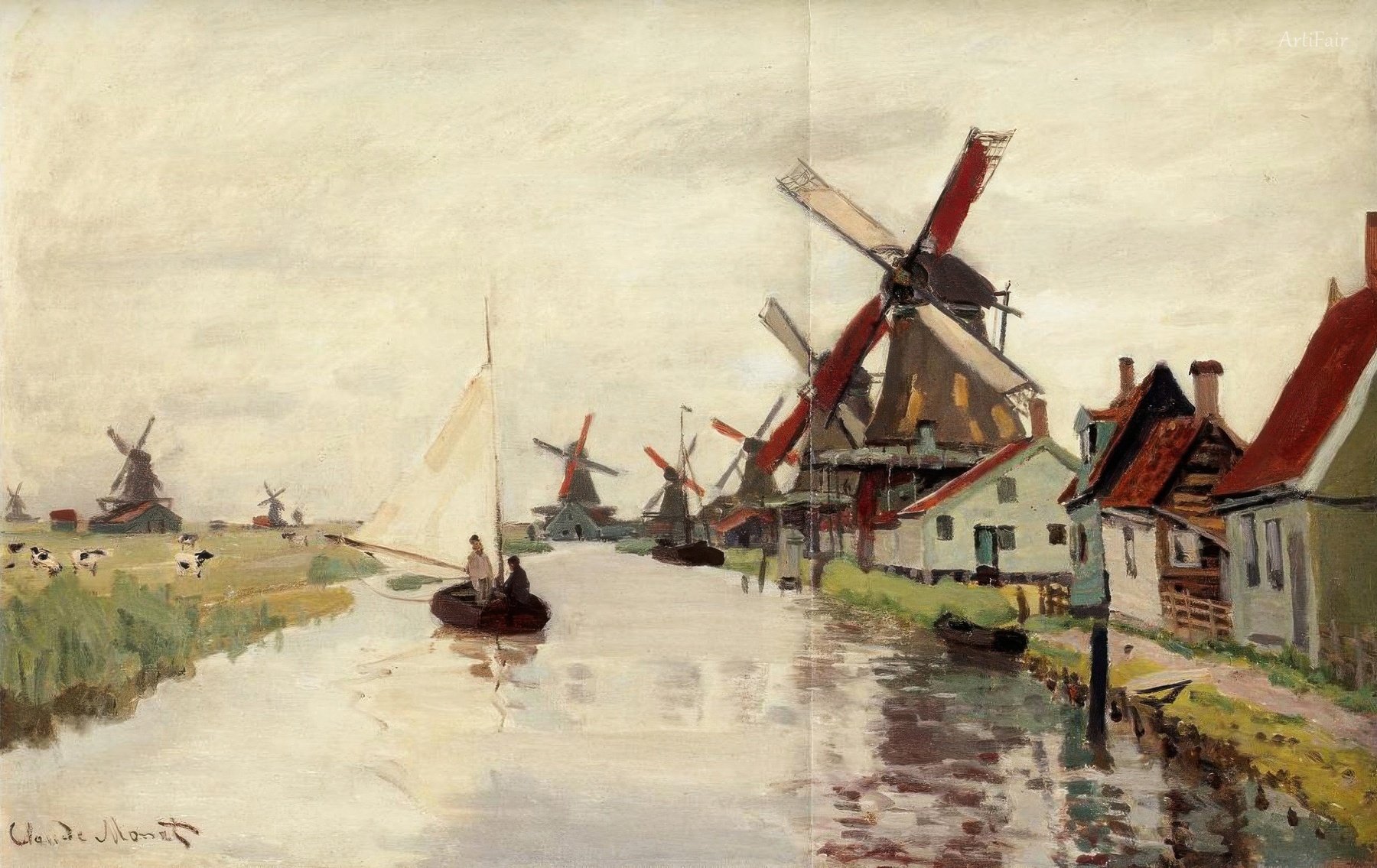
Art Appreciation
The artwork conveys a serene yet dynamic landscape, where a row of windmills stands proudly against a soft, overcast sky. Each windmill, with its wheels twirling gently, reflects the characteristic charm of rural Holland. In the foreground, a small boat glides smoothly along the tranquil canal; its white sail, a stark contrast to the muted tones that dominate the scene, captures an inviting breeze. The buildings that flank the waterway, with their quaint facades, seem to whisper stories of a simpler time, creating an atmosphere that beckons personal reflection. The rich play of textures – from the rough wood of the homes to the fluid surface of the water – invites the viewer to almost touch the landscape. Monet's brushwork is expressive yet restrained, employing loose strokes that breathe life into every corner of the canvas.
This piece, rich in emotional resonance, draws one into its world; the colors, largely muted with soft greens, greys, and hints of ochre, create a sense of calm and introspection. The historical context is significant, as it captures Monet's fascination with light, texture, and the idyllic Dutch landscape. Reflecting the Impressionist movement's hallmark, this painting exemplifies the era's shift towards capturing fleeting moments of beauty in ordinary life, encouraging viewers to find joy in the mundane. It stands as a testament to both the artist's genius and the cherished tranquility of a bygone era, evoking a longing for simpler, unhurried days.